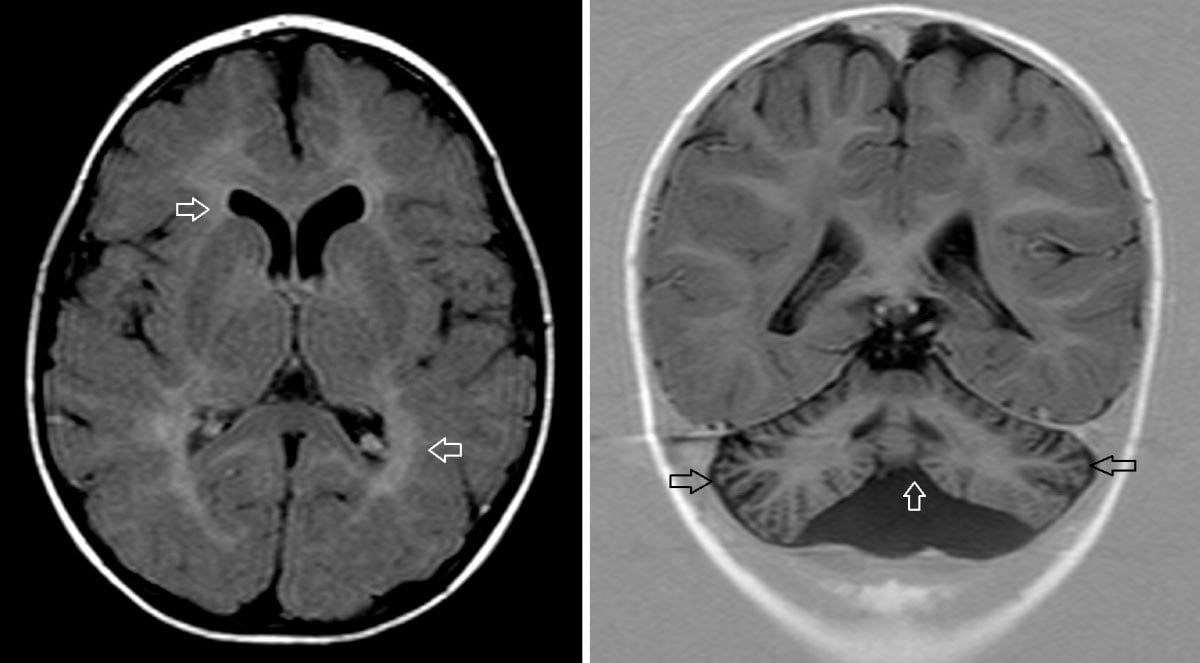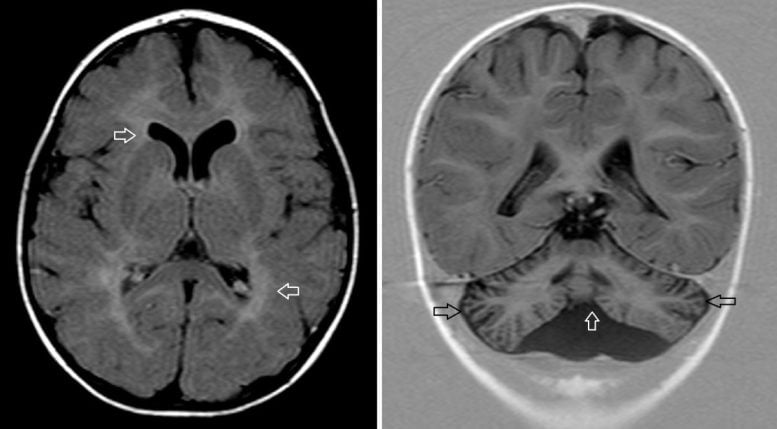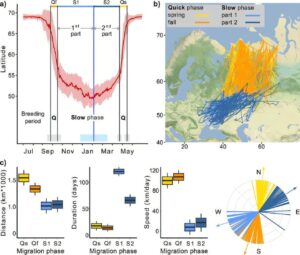

Researchers at Washington University have discovered a new genetic disorder affecting protein folding, offering potential new treatment avenues for rare brain conditions.
When most people feeling unwell visit a doctor, they expect a clear diagnosis and treatment plan. However, for some 30 million Americans with rare diseases, their symptoms don’t match well-known disease patterns, and they may spend years or even lifetimes seeking a diagnosis.
Breakthrough in Understanding a New Genetic Disorder
Now, a team of researchers from Washington University School of Medicine in St. Louis and international collaborators has solved the mystery of a child with a rare genetic illness that did not fit any known disease. The team found a link between the child’s neurological symptoms and a genetic change that affects how proteins are properly folded within cells, providing the parents with a molecular diagnosis and identifying an entirely new type of genetic disorder.
These findings, recently published in the journal Science, could lead to new treatments for rare brain malformations.

Advancements in Genetic Research
“Many patients with severe, rare genetic disease remain undiagnosed despite extensive medical evaluation,” said Stephen Pak, PhD, a professor of pediatrics and a co-corresponding author on the study. “Our study has helped a family better understand their child’s illness, preventing further unnecessary clinical evaluations and tests. The findings also have made it possible to identify 22 additional patients with the same or overlapping neurological symptoms and genetic changes that affect protein folding, paving the way for even more diagnoses and, ultimately, potential treatments.”
According to Pak, about 10% of patients with suspected genetic disorders have a variant in a gene that has not yet been linked to a disease. His career has been focused on solving such medical mysteries.
Pak and author Tim Schedl, PhD, a professor of genetics and a co-director of the model organisms screening center at WashU Medicine, use tiny roundworms called C. elegans to assess whether specific genetic changes found in undiagnosed patients are responsible for their symptoms. With funding from the Eunice Kennedy Shriver National Institute of Child Health and Human Development of the National Institutes of Health (NIH), they and a team of researchers at WashU Medicine have committed to solving more such cases.
Methodology and Findings
For this study, they teamed up with researchers and doctors from more than a dozen institutions across North America, Europe, India, and China to identify the cause of a cluster of clinical findings in a boy from Germany, and other similar cases. The German patient had an intellectual disability, low muscle tone, and a small brain with abnormal structures. Doctors also found changes to the CCT3 gene, so Pak’s team set out to determine if it could be the cause of the patient’s condition.
C. elegans has counterparts to about 50% of human genes, including the CCT3 gene, which is known as cct-3 in roundworms. Weimin Yuan, PhD, a staff scientist in pediatrics and co-first author, found that C. elegans with the patient’s genetic variant moved slower than roundworms with a healthy copy of the gene did, revealing that the genetic change can affect mobility and the nervous system.
The affected CCT3 protein is part of the large TRIC/CCT molecular complex whose job is to fold other proteins into their proper shape so they function as they should within cells. The study found that the protein-folding machinery cannot perform without a specific amount of healthy CCT3.
“We knew the child has one good and one bad variant gene copy,” Schedl said. “Our studies in C. elegans revealed that the genetic change reduces the activity of the normal protein, decreasing the capacity of the protein-folding machinery, and that for both C. elegans cct-3 and human CCT3, having 50% of activity was insufficient for normal biological function.”
The outcome of having reduced protein-folding machinery, they found, was that actin proteins – which help to maintain cell shape and movement –were incorrectly folded and abnormally distributed throughout the cells of C. elegans that carried the patient’s variant.
“An understanding of the impact of the genetic change informs the treatment modality,” Schedl added, “because the treatment needed to increase the amount of a normal protein differs from the treatment needed when the protein is poisonous or overactive.”
Collaborators from RWTH Aachen University in Germany and Stanford University performed complementary investigations into cct3 variants in zebrafish – which illuminated the effects of the gene on brain development – and in yeast, which clarified its role in protein folding, respectively.
Implications for Future Treatments and Diagnoses
To determine if there were other patients with this same disorder, researchers mined a freely accessible global database of individuals with intellectual and developmental disabilities. They identified 22 individuals with genetic changes in seven of the eight CCT proteins that form the protein-folding machine. Abnormalities in mobility and actin folding were again seen in roundworms with variants affecting CCT1 and CCT7 proteins, just as the WashU Medicine team observed with dysfunctional CCT3. Together, these patients represent a new type of rare genetic disease involving the protein folding machinery.
“This work underscores the importance of using simpler model organisms, like C. elegans, to provide novel insights into human pathobiology,” said co-author Gary Silverman, MD, PhD, the Harriet B. Spoehrer Professor of Pediatrics and head of the Department of Pediatrics.
“Our findings can inform clinicians, the scientific community, and patients and families all around the world that changes to the genetic message that are needed to make the eight-protein complex cause disease,” added Pak, who together with Schedl and a team of NIH-funded researchers at WashU Medicine, aim to solve challenging medical mysteries using advanced technologies. “If next week a patient with brain malformations and neurological symptoms is found to have a variant that affects the protein-folding machine, the patient will receive a diagnosis.”
Reference: “Brain malformations and seizures by impaired chaperonin function of TRiC” by Florian Kraft, Piere Rodriguez-Aliaga, Weimin Yuan, Lena Franken, Kamil Zajt, Dimah Hasan, Ting-Ting Lee, Elisabetta Flex, Andreas Hentschel, A. Micheil Innes, Bixia Zheng, Dong Sun Julia Suh, Cordula Knopp, Eva Lausberg, Jeremias Krause, Xiaomeng Zhang, Pamela Trapane, Riley Carroll, Martin McClatchey, Andrew E. Fry, Lisa Wang, Sebastian Giesselmann, Hieu Hoang, Dustin Baldridge, Gary A. Silverman, Francesca Clementina Radio, Enrico Bertini, Andrea Ciolfi, Katherine A Blood, Jean-Madeleine de Sainte Agathe, Perrine Charles, Gaber Bergant, Goran Čuturilo, Borut Peterlin, Karin Diderich, Haley Streff, Laurie Robak, Renske Oegema, Ellen van Binsbergen, John Herriges, Carol J. Saunders, Andrea Maier, Stefan Wolking, Yvonne Weber, Hanns Lochmüller, Stefanie Meyer, Alberto Aleman, Kiran Polavarapu, Gael Nicolas, Alice Goldenberg, Lucie Guyant, Kathleen Pope, Katherine N. Hehmeyer, Kristin G. Monaghan, Annegret Quade, Thomas Smol, Roseline Caumes, Sarah Duerinckx, Chantal Depondt, Wim Van Paesschen, Claudine Rieubland, Claudia Poloni, Michel Guipponi, Severine Arcioni, Marije Meuwissen, Anna C. Jansen, Jessica Rosenblum, Tobias B. Haack, Miriam Bertrand, Lea Gerstner, Janine Magg, Olaf Riess, Jörg B. Schulz, Norbert Wagner, Martin Wiesmann, Joachim Weis, Thomas Eggermann, Matthias Begemann, Andreas Roos, Martin Häusler, Tim Schedl, Marco Tartaglia, Juliane Bremer, Stephen C. Pak, Judith Frydman, Miriam Elbracht and Ingo Kurth, 31 October 2024, Science.
DOI: 10.1126/science.adp8721
This work was support by the National Institute of Child Health and Human Development of the National Institutes of Health (NIH), grant number R01 HD110556; the NIH, grant numbers GM74074 and GM56433; the Children’s Discovery Institute, St Louis Children’s Hospital Foundation; Italian Ministry of Health, grant numbers RCR-2022-23682289 and PNRR-MR1-2022-12376811; the Canadian Institutes of Health Research (CIHR) for Foundation Grant, grant number FDN-167281; the Transnational Team Grant, grant number ERT-174211; the Network Grant OR2-189333, grant number NMD4C; the Canada Foundation for Innovation, grant number CFI-JELF 38412; the Canada Research Chairs program (Canada Research Chair in Neuromuscular Genomics and Health), grant number 950-232279; the European Commission, grant number 101080249; the Canada Research Coordinating Committee New Frontiers in Research Fund, grant number NFRFG-2022-00033and from the Government of Canada, Canada First Research Excellence Fund (CFREF) for the Brain-Heart Interconnectome, grant number CFREF-2022- 00007; CIHR Postdoctoral fellowship; the German Research Foundation, grant number WO 2385/2-1; the Deutsche Forschungsgemeinschaft (DFG, German Research Foundation), grant numbers WE 1406/16-1, WE 1406/17-1, 418081722, 433158657, 499059538, INST 222/1458-1 FUGG, KU 1587/6-1, KU 1587/9-1, KU 1587/10-1 and KU 1587/11-1; the “Ministerium für Kultur und Wissenschaft des Landes Nordrhein-Westfalen,” grant number PROFILNRW-2020–107-A; “Der Regierende Bürgermeister von Berlin, Senatskanzlei Wissenschaft und Forschung”; postdoctoral fellowship from The Hereditary Disease Foundation (2019-2023); the lonGER consortium; the European Union’s Horizon 2020 research and innovation programme under the EJP RD COFUND-EJP, grant number 825575. The content is solely the responsibility of the authors and does not necessarily represent the views of the NIH.

